-
Posts
2,468 -
Joined
-
Last visited
Content Type
Forums
Detector Prospector Home
Detector Database
Downloads
Posts posted by jasong
-
-
Is there any chance these two guys could come on the forum and do a question/answer session about some technical aspects of the detector and settings?
In particular some kind of clarification on General mode would be great. From Minelab various sources we've now heard "5+ grams", then "medium to large", then now "a few ounces" regarding the point where General should be used over High Yield.
I understand every nugget is different and it's very difficult to quantify these sorts of things (the White Paper scatter plot data point spreads as a good example). But this 5g, medium to large, and a few ounces defintion is far to vague and broad for me to get any kind of meaning out of it.
But even in the white paper it seems that on average even on larger nuggets that High Yield is still outperforming General, or at least staying up with it despite wether the 5000 was in Normal or Fine Gold.
Since Phil comments in the video that General is "pushing the technology to it's limits" I am trying to understand this, seems like we should see something more definitive in the results.
Also, I'd be very curious to hear wether there will be the ability to add on via software updates, additional timings or other features into the programming. A slider for audio smoothing comes to mind. I have a whole slew of them which aren't really relevant to this gold mode thread but I'd love to ask.
-
Maybe I'm not understanding your method, but couldn't you just stay in auto-tracking and pull the quick track button instead of switching back and forth between manual and auto with the user button? Seems like it'd be faster, fiddling with the screen is slow and requires stopping swinging.
The Z is just noisier in my opinion than the GPX, especially for guys who are really used to running the GPX. GB meteorites won't track out, at least in my testing with a variety of pieces from 2 grams to 450 grams, but the GPX will hit harder on them in a lot of cases.
I think I know the pieces of rock you are talking about. They look kinda like dark brown shards, sound like targets, but fade pretty quickly with depth and aren't usually any deeper than 3" or so so I've always just swept them away with a few boot scrapes since I don't run into more than 4 or 5 a day normally except in a few small areas, quicker than adjusting settings. Maybe those aren't what you are talking about. The only other ones out there I ever hit that sound like targets are the weird grainy dark rusty bits that occasionally are rotten enough to break apart in your hand, like partially metamorphosed sandstone, but they are even more rare. Gold Basin is easily the least hot place I detect, just was curious to read this. I haven't had my Z down there yet, waiting for Fall/Winter to hit my patches down there.
-
Same here Russ, I tried an in ground test yesterday with my 47 gram slug and still couldn't get General to outperform High Yield at 20". The soil was bordering between Normal and Difficult, depending who you talk to. But General works in Normal so I don't see why there shouldn't still be an increase in depth on those big chunks even in medium ground.
I suspect the Ozzie concept of "big gold" is a bit different than ours. My nuggets are probably "fines" over there.
Side note: never call a physicist an engineer, I've seen fisticuffs over less.

 Kidding, it's a running joke between the two.
Kidding, it's a running joke between the two. -
Good job, and it was nice to meet you out there, glad to see your finds kept coming!
-
To me the difference between a VLF and PI is night and day. The difference between a GPX and a GPZ is more like morning and afternoon to continue the analogy.
I don't think anyone who has spent a good amount of time swinging a Z could debate that it isn't significantly more powerful than a GPX though. Especially pronounced where you can run the detector hot, which I imagine is much more common in the US than the bad AUS grounds which may be why the reviews are overall more positive stateside.
It's not all roses though, I think the Z has some serious flaws to compliment it's accolades after about 60 hours of swinging it. Most have been discussed by other people so in the interest of not "whinging" I'll refrain. But I will say I'm sitting here in front of a computer today in my trailer with a sore elbow and shoulder instead of detecting.
-
Very cool mod, Minelab should take note of that photo!
-
I'm liking the Z for a lot of situations, but I'm with Klunker, personally I'd use something else in real steep canyon country or land with rapidly varying gradients. I'll reevaluate that after a smaller coil comes out.
For exploration, general prospecting and patch hunting I'm still leaning towards my 45 since the coils are way lighter and much larger selection. When I'm in really mountainous terrain I'll probably still do just what I did last year, swing the 45 with a couple ellipticals and pack a GB2 until I find a really nice patch with deeper ground and then hit it with the Z.
-
Reseting the WM12 seems to have work, though it did act squirrly again briefly one time about 2 hours later but worked fine the rest of the day thereafter.
A different place today and for the 3rd day I got 5 nuggets again. These all look water worn yet no rounded gravel in sight. The big lima bean looking one had to have been 14 or 15 inches and went 3.72 grams. I had run my 17x11 and 4500 over that exact spot without a whisper almost a week ago. So, I feel pretty confident now that the Z will even hit on solid chunky stuff deeper than the GPX, not just the spongy or weird bits.
Getting more used to running with no audio smoothing now. No smoothing and HY/Normal are without a doubt much more sensitive and much deeper on the sub gram stuff than HY/Diff. My general procedure now is start in Normal/No Smoothing, then when facing harder ground go to low smoothing, then high smoothing, and only then switch over to Difficult/No Smoothing.
Anyways, going to spend some time hunting hard rock ore piles and take it a bit easier for the next few days now. That's where 5 odd days of swinging the Z left me setting-wise. Anytime I can run normal, I'll do it. Even if it means putting up with some noise, and it is loud especially without smoothing. I have to really slow my swing speed down too. As has been said by other people, you have to retrain your ears a bit if you are really used to the GPX. The detector itself is simpler, but I think the audio is more complex.
-
Thanks David, hey if by chance you end up out here in the general area let me know, it'd be nice to meet you in person and do some detecting! I'll be here another 3 weeks or so.
Heading out again today to test the WM12 reset, spent yesterday repairing the pick and letting the arm have a little rest.
-
The problem is that you could easily miss gold that way. Each ground setting is less sensitive than the previous so a good target might also get quieter as you switch to Difficult and then to Severe and not just ground noise, especially tiny or deep targets.
Much harder is to track a target out. Or if you are in autotrack just swing the coil back and forth 5 or 6 times over the signal area, not big wide swings like when walking but enough to pass over the target completely from each direction. You will find that targets stay nice and sharp where as ground noise and hotrocks generally get more smoothy or track out all together. The tracking system on the GPZ in my experience so far is more powerful than the GPX.
As far as discriminating iron trash, I'm not sure what to think at this point. My experience is that the Z is slightly less sensitive to the rusty old iron stuff than the GPX was, and I'm still feeling that way but I can't really quantify it yet, but if that exists and isn't just something in my head then it's only slight and iron trash still definitely hits as a target which I can't track out.
As you may have read in other threads, it is possible to pass over some of the ultra tiny iron trash on or near surface if you are in areas where the gold is bigger and deep. I've used General for this, but I'm trying to ignore stuff that is like ~1 grain and under and basically on or near the surface. As others have noted, Extra Deep may find use for bigger stuff but a guy would need to do some experimenting to find what works.
-
The somewhat humorously ironic thing is that it's becoming kind of difficult to test these things in ground. Digging a 3ft deep hole in concrete like clay to test some targets is something I gotta be in the mood for I guess. Most the ground I'm detecting bottoms out to bedrock around 1.5 to 2ft.
I'd be interested to see other people's results if anyone does some testing though. I did some "smallness limit" tests with all 3 detecting and ground modes when I first started and they were in ground to see if I could selectively ignore certain sizes of trash, but I feel like with more experience now I have to redo them.
-
To find one, you do not need a super detector, you need to put your coil over ground that has not yet ever seen a coil. Those expecting lots of large nuggets to appear from ground pounded by other for decades just because a new detector gets a few more inches are likely to be disappointed. It is going to happen, just not near as often as people expect.
This. From my experience maybe 10% of the prospectors I meet spend a significant portion of their time hitting completely new ground. It's understandable because it can be extremely frustrating to go weeks on end digging nothing but trash or hotrocks, tank after tank of gas especially if a person is just having fun on the weekend which are a lot of people. But there are still lunkers out there waiting to be found for those with the patience and a bit of pioneering spirit. And lots of gas money.

-
Interesting to see the Z working in a different capacity. I'm not much a relic hunter (mostly because I live in an area with very sparse older history) but interesting to read about it and see some results, thanks.
For whatever it's worth (about 2 cents and no more) my experience is the warbling is more related to geometry of the target and depth than composition. But maybe my ear just isn't trained enough yet. At least, I've been digging a few teeny tiny bits and they all sound different and I would have missed a couple nuggets going off sound only as some are nice and sharp and others sounded like a piece of tiny rusty iron wire.
I have been testing a 47 gram melted slug of gold since it's the biggest gold target I have. Granted it's air tests with a meter stick since the odds of me finding a deep buried giant nugget to casually test in real world conditions are about zero haha. But anyways, I can't get General to outperform High Yield on depth with it. I can get a diggable signal at 23.5 to 24 inches with the sens at 14 on HY and the best I can squeeze out of General is 23, and maaaaaybe 23.5. I haven't tried extra deep yet. Anyone else had luck with getting general to outperform HY?
-
Thanks Steve, I forgot there was a real reset on the module, I just turned it off and on. I'll give that hard reset a try tomorrow and report it back here if it works.
-
I haven't noticed it with a good piece of steel, seems like rustier unidentifiable bits are what does it. The meteorite thing makes sense, they are basically really really hot rocks, these stony ones.
Went out prospecting today with the 45, broke my pick handle so changed plans and ended up with 5 more tiny ones for the Z.
Decided to go somewhere with shallow bedrock so I could just use my rock hammer instead of the broken pick so went to give the Z a run over some ground I'd pulled a couple out of before with the 45. There are dig holes about every 5 feet in spots, some VLF's have hit this ground too. I didn't get anything with the 45 last visit. I don't think this area has a name, it's not Rye Patch but still N. NV.
So I thought I'd take the BFH approach and see what the Z could do:
Sens 16
High Yield/Normal
No Audio Smoothing
Threshold 5
Auto tracking
It was loud loud loud. But it was hitting on stuff VLF's missed once I got used to the noise, slowed way down, and listened closely. The big one is real flat and it was on edge between flakes of shale about 2 inches into the bedrock. The tiny one is 1.4 grains, you can see it in my scoop if you squint hard and it came from where I was pointing so probably 5-6 inches down which is pretty amazing with a 14" coil. Another piece was in a lens of that hot clay, look closely it's there. I was still digging as the sun went down, there is more left there.
It would be unbearable detecting like this all the time, but for really flexing some muscle in a smallish area where you know there is already gold it can pull a couple more pieces up even in GB2 territory and get your gas money at least. The GB2 is still the king of dinks in my mind though when dealing with 4" minus depth and 1 grain minus weight, or on ore piles.
Now for the downside, I seem to have developed some issue with the wireless module. It was only 1 bar away from full batteries but kept cutting in and out for a few minutes then working fine, then cutting out, etc. Then for like 15 seconds randomly it would do a real quiet "do-woo, do-woo, do-woo" in the background underneath the threshold almost like the shutdown chime effect but not quite. I switched back to default settings and it kept doing it, reset the module and the machine and still was doing it, so after about 30 minutes of it doing then stopping off and on I moved it from the top of my shoulder to the strap on my pack that is literally right next to the detector and it seemed to help a bit but would still do it occasionally but not as badly.
It did that once before yesterday but then didn't do it again, seems to have gotten worse today so not sure what's up with that.
-
I think, and someone please correct me if I'm wrong, that carbon fiber would attenuate or otherwise alter the signal if it was on the bottom of the coil as it is slightly conductive.
But it might be a good addition to replace the tops of the coils to save some weight maybe, or the big plastic part inside that prevents the windings from moving and falsing?
-
I wonder does altering the coil in any way void the warranty? Or are you only covering up the cover itself and leaving the coil untouched?
I usually put Amazing Goop on my coils since I destroy the covers so quickly as you do but I usually cover a lot of the coil rim and not just the cover. I'd like to do the same with the Z coil. I'll check and see.
-
Oh one more observation that I wanted to throw out there and see if anyone else noticed or if it was just my imagination:
Does it seem like whatever balancing and processing the Z is performing under the hood also makes it slightly less hot on iron to anyone else? I mean, it doesn't discrim it out, but it seems to me that it hits on higher conductivity targets much harder than the GPX in almost all cases but hits on the iron bits equal to or even slightly less than the GPX. I was wondering if that might have to do with the way it does it's thing with the DOD and soil monitoring?
Also getting the same results with meteorites, I only tried Gold Basin chrondrites, but the Z was hitting equal to or less on them then the GPX was unless I really souped the Z up. Even though it was hitting quite clearly deeper on gold I tested.
Just thought it was interesting, was wondering if anyone else noticed or if my mind is playing tricks on me?
-
Bill, all were fairly shallow between 3-7 inches, between 0.12 grams and 0.77 grams and all were good signals a couple a bit subtle. High audio smoothing definitely loses depth/sensitivity, but being able to run in normal plus the upped sensitivity seemed to make up for it and give a more stable threshold(maybe?). Not sure if it was better or worse than factory preset, but it was different and quiet enough and seemed to be deeper so figured I'd just pass it on.
I like hunting that way with the GB2 too Russ.
 Though I'm slowly coming around to a more variable approach. That's the general idea that's been rolling around in my head though, kind of what you, Steve, and Gerry are talking about, experimenting around, push it one way to see what bends on the other side, find compromises, find extremes, find something that suits individual detecting preference somewhere in between.
Though I'm slowly coming around to a more variable approach. That's the general idea that's been rolling around in my head though, kind of what you, Steve, and Gerry are talking about, experimenting around, push it one way to see what bends on the other side, find compromises, find extremes, find something that suits individual detecting preference somewhere in between.
The thing that I liked running the Z this way was that it definitely smoothed out the smooshy ground noise. That noise makes me have to swing a lot slower like half the speed of my GPX but with the Z setup like this I feel like I can cover a lot more ground and breathe more freely as it were. Of course I'm still very new to this machine so anything I say is just completely circumstantial right now, just relaying something that worked here in the particular case since it's a popular detecting area.
Oh yeah also forgot to say, it let me feel more comfortable with running in manual ground track mode too since I didn't feel like I was needing to balance it literally every 30 seconds or so since it takes a bit longer to balance than the GPX (i know, I'm very impatient). Until yesterday I was only doing auto track. Not sure if I gained anything from manual balance or not. Or if my desire to run in manual is just a relic from the GPX. No idea, it's all learning experience for me right now.
-
Nice drizzly and cold day today, suits me perfect since I can't stand heat, I had Rye Patch all to myself. I'm not very familiar with this area so I was just out to test settings on the Z and get a bunch of swinging time in since I've been mostly patch hunting with the 45. Got 5 all from one side of a small feeder wash near what I'm assuming is the main area.
Sens 18
High Yield
Normal and Difficult (switching as required)
High Audio Smoothing
Kind of going the opposite direction with the settings and running the machine really hot but then letting the High audio smoothing stabilize the whole mess. I'm liking this in ground that allows it. I know the general consensus is Difficult/No Audio Smoothing/Low Sensitivty, but the advantage to running HIGH is that it kills almost all EMI, eliminates a lot of "smooshy" hot ground noise, but still lets the sharper target signals in when you kick up the sens and move into Normal.
Anyone else trying the same? Again, only good where you are lucky to have low mineral ground. But I found this was more palatable to me than running in medium sensitivity and HY/Diff/Low Audio surprisingly, even on a few hot patches.
I ran the GB2 over the little patch I found and didn't come up with any more gold but I did get a few sub grain size pieces of tin and a couple pieces of tiny candy foil that the Z missed.
I really want more adjustment control on the Audio Smoothing like a slider instead of 3 discrete functions. Also, having 2 more ground settings would be great, one in between Normal/Diff and one between Diff/Severe. Or a slider if that's possible, but I'm guessing the ground timings are their own thing seperately.
-
That's a great site Barry. I was doing a similar thing a few years back but stopped since I didn't have time or resources to maintain it with full time prospecting.
If you don't mind me asking, how do you update your claims layer? I was getting that bi-weekly LR2000 database dump from the BLM but you mentioned you could potentially update more often?
Also a request or suggestion, if you already have the database in place could you make a simple front end where we could quickly query all the fields and do complex custom searches? Similar to Lr2000 but it takes forever to navigate through their clunky interface.
Also, any chance you could create an MTP layer since they are all available at the GLO? I couldn't figure out a good way to automate it all so never managed to do it, was wondering if you have given it a shot or thought about it.
-
Right, I wasn't suggesting to balance over a target.
Seperately, I was assuming since I haven't read anything to the contrary from Minelab, that is ok to move the coil up and down over a target or another way of saying in and out of the dig hole (while not quicktracking) without worry of balancing the target out and without having to dig a crater size hole that allows a side to side sweeping motion.
I only mention it because it seems I've read in a few different places now people saying not to do that or you could potentially make good targets disappear and that it is a bad habit, which has been somewhat contrary to my experience digging but I haven't swung the Z nearly as much as some of you guys.
I've noticed that sometimes swinging forward to back is more sensitive on tiny targets than side to side regardless of their orientation or geometry, at least so far in my limited sample base. When I'm crumbing GB2 territory I sure seem to pick up a lot more doing that at least maybe it's just psychological at this point not sure. I've used almost exclusively mono coils up until now so still getting the hang of this DOD.
-
Something relevant in this paper is being discussed in another thread:
The best way to ground balance initially after switch on with the Quick‑Trak trigger depressed, is to sweep the coil in a typical side‑to‑side search mode at the expected operating height above the soil surface
IMPORTANT! DO NOT ground balance using a coil up and down motion (like one would do using a PI detector) initially after turn on with the Quick‑Trak trigger depressed. This does not give the initial calibration enough different soil information to calibrate optimally. If ground balance is required again sometime later (but without turning the detector off ), ONLY THEN is the usual (PI type of ) ground balancing up‑and‑down coil motion OK.
It seems like everyone is saying to not do the up and down typical PI balancing motion, even to avoid doing this on targets.
But what this paper seems to be saying is that the side to side motion is to be performed at initial startup and then thereafter it is actually OK to move the coil up and down for balancing and I'm assuming also over targets as well...?
-
I've had some luck cancelling out the charcoal spots just by swinging back and forth 4 or 5 times slowly in autotrack, the signal generally gets a bit less intense as the coil has a think whereas a good target doesn't. Same with the hot clay balls here in Nevada, they sound just like a real good target and not a hotrock but they generally get much less intense or go away all together after you swing back and for for a bit and let it process.
I agree with you GH, Enhance on the GPX as a whole deals with the hot rocks and lensy bad ground better than HY/Diff, but at the loss of some sensitivity. I'm having a tough time in some wash sides using the GPZ that I've gone over with the GPX in Enhance without much problem, and kicking it into Severe just seems to lose to much to pick up anything I missed.
This machine really seems like it needs to be swung real slow in any kind of remotely inclement ground to give all the data processing time to work and figure out what it's hovering over. Like 1/2 or less the speed I'm generally swinging my 45...is it only me? Once I slowed down I had a lot less issues with ground.



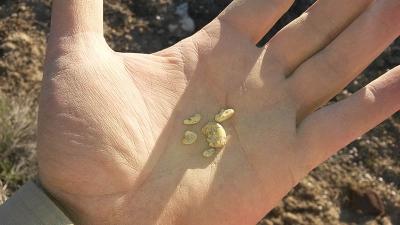
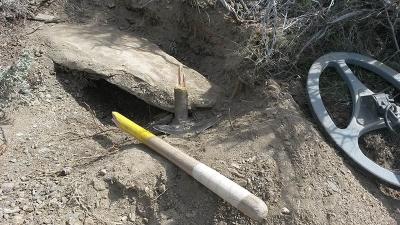
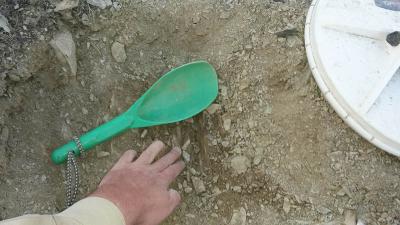
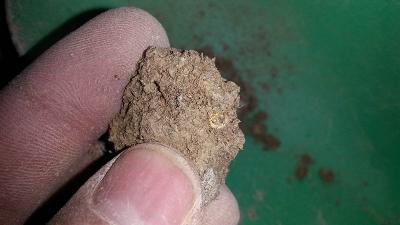
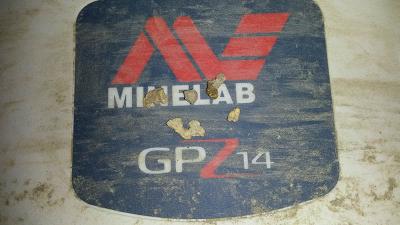
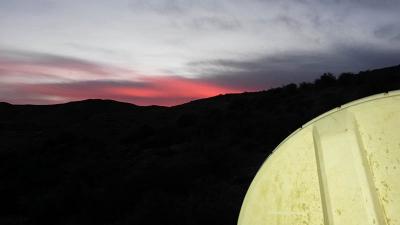
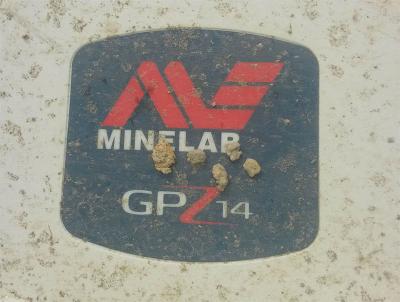
High-trash Area Prospecting VLF Or PI
in Metal Detector Advice & Comparisons
Posted
I'm wondering the same thing, I'm about to add a detector to the arsenal for high trash areas and probably 90% pure gold prospecting usages. I don't mean to hijack your thread but I was wondering is the F19 a good choice for a discriminating prospecting unit? I was really interested in seeing the Gold Racer but it's getting to the time where I need to make a purchase and can't keep waiting.
Seems like recent detectors are all pretty sensitive and deep (within a few inches) so it seems like the main criteria is superior discimination and target separation. Watching youtube vids and reading reviews (mostly coin/relic guys though) it seems to me like the F19 or the FORS is the best bet for those of us who can't afford the CTX?